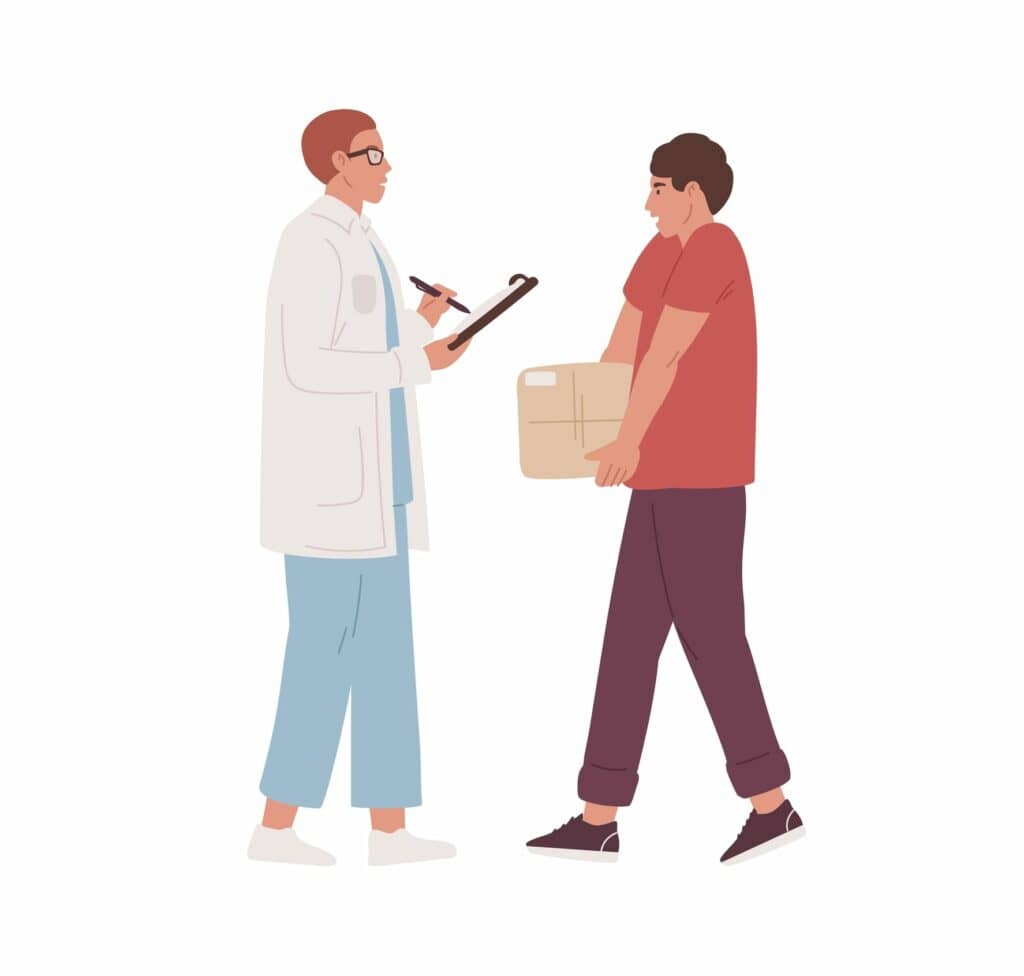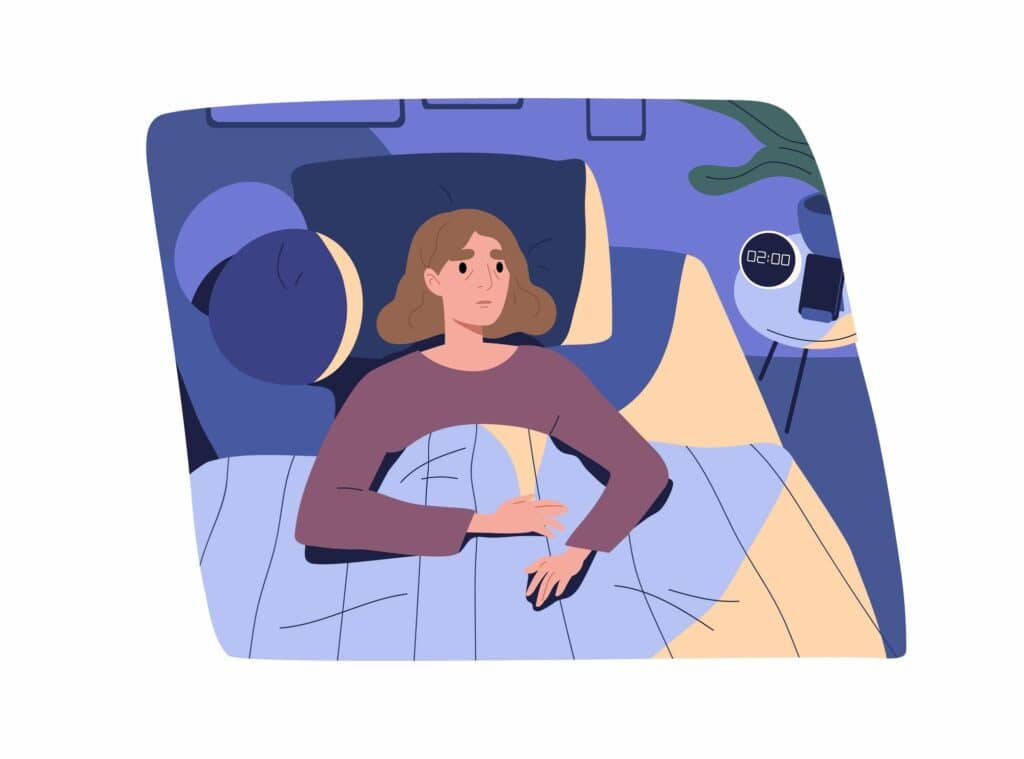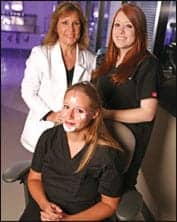What do the recent advances in type II home sleep testing mean for sleep medicine?
By Sree Roy
The ability to test for sleep apnea outside of the sleep lab has undoubtedly helped many people with excessive daytime sleepiness, snoring, and other symptoms gain access to sleep diagnostics and therapy. Yet alongside that gain has come a loss of brain signal measurements that are monitored by in-lab polysomnography (PSG) systems. Most home sleep testing (HST) devices capture respiratory and cardiac signals but do not have electroencephalography (EEG) capability.
“We believe sleep testing goes way beyond just measuring the cardio-respiratory function, such as in a type III device. Direct measurement of brain signals with an EEG gives a more accurate picture of what really happens during sleep, rather than relying on surrogates or derived measurements,” says Ruben de Francisco, CEO of Onera Health.
Onera Health is one of several sleep technology companies that recently unveiled home sleep testing devices with EEG to the US marketplace. Unlike the more common type III home sleep testing devices—which measure ventilation or airflow, heart rate, and oxygen desaturation—type II devices have a minimum of seven channels, including EEG, allowing for sleep staging.
Many type II home testing devices can also be used in sleep labs, where the addition of elements like real-time video and an observing sleep technologist mean a full type I attended study can be conducted using the same equipment and software.
Some patients experience “small arousals during the night that are not reflected in the heart rate; you’d see them in the EEG only,” de Francisco continues. “Certain populations have a lot of awakenings and poor sleep quality but are told they do not have sleep apnea. Well, maybe there is actually sleep apnea but it’s waking the person up before it registers on the type III devices.”
“The more biosignals a device is capturing, the more information it is giving to clinicians,” says Ingvar Hjalmarsson, chief strategy officer and executive vice president, strategic business, of Nox Medical, whose Nox A1s type II home sleep and in-lab device became available to US sleep labs in October 2021. “There are many patient populations where clinicians need the full picture of a patient, including EEG for accurate sleep staging, before they can diagnose or recommend individual treatment pathways.”
And as scientific studies increasingly translate more data from EEGs into real-world insights, clinicians will be better able to set patient expectations on subjects like sleep quality and therapies for sleep apnea with comorbid insomnia, regardless of whether their sleep study is conducted at home or in a lab, says Patrick Crampton, chief commercial officer of Cerebra, which has a sleep system with EEG for dual in-lab and at-home use available in Canada and pending FDA clearance in the United States. “When patients have a negative HSAT [home sleep apnea test], how do we help them if we’re not measuring their sleep?” Crampton asks. More data will help doctors get patients to the treatment they need more quickly, he says.
The availability of type II at-home sleep studies “creates a more holistic view and adds more value to the patient-provider continuum,” Crampton adds.
The burst of activity in the category of ambulatory type II polysomnography systems “shows there is a very strong need,” says de Francisco. “We’re happy to see the trend is going in this direction, making sleep diagnostics and monitoring very accessible. This cannot be achieved by only one player but requires a larger group of innovators to drive change.”
These innovators include Onera, Nox, SOMNOmedics, General Sleep Corp, and Cerebra.
Cerebra’s Crampton also thinks the increasing availability of type II home sleep test options is “hugely positive.” He says, “The key to the importance of this movement is the value that is derived from the additional channels….The key, as opposed to past technologies, is overcoming the usability barrier.”
Self-Applied EEG
“Putting on a belt is easy but putting on electrodes is harder,” says de Francisco. “Making electrodes to be self-applying is the challenge.”
To make EEG electrode application user-friendly, companies with type II HSTs tend to avoid hairline placement, sticking to side and frontal electrode locations only.
Manufacturers also provide easy-to-understand instructions.
“The headbox has a picture and the leads are color-coded to match the picture,” says Julia Sarmiento, director of sales for the Americas at SOMNOmedics, which offers 2, 5, and 8-lead options for home sleep tests with EEG; the 2- and 5-lead options allow patients to apply the electrodes by themselves while the 8-lead headbox requires a sleep tech to apply it before a patient is sent home.
SOMNOmedics’ sleep systems are designed so that if a sleep lab’s business changes, the lab can simply add a new headbox while retaining the base device and software. The systems are also wireless, enhancing their patient-friendliness.
In a study conducted by Cerebra of its self-applied system, 91% of patients had a successful type II sleep study on the first try.1 “Our failures were largely the same as type III—cannulas falling out or an oximeter falling off the finger,” Crampton says.
Of the participants who had a failed study, just under half had a successful study with a second night of recording.2 In Canada, where the Cerebra Sleep System has been deployed clinically for about 12 months, sleep professionals frequently provide an extra set of consumables to patients up front, so patients do not have to come into the lab if the study fails on the first night; they simply try again at home.
Of course, as important as patient-friendliness is, physician-friendliness is just as important. Since the trickier electrode placements are avoided, expect less redundancy and fewer channels in the resulting data compared to in-lab PSG. But strong signals, the ability to see the raw data, and having a data set comparable to in-lab testing are reasonable expectations with today’s type II home sleep tests.
From Sleep Lab to Home and Back Again

Many, though not all, type II HSTs are designed to work for type I sleep studies (also known as attended studies) too, and so are designed for portability. A sleep lab can use a single system for in-lab and at-home studies. They have minimal (in some cases, zero) cables tethering them to sleep lab walls and can be packaged to ship to patients by mail.
SOMNOscreen polysomnography systems offer “all the flexibility in the world,” Sarmiento says. “All the SOMNOscreens are fully wireless—there is no cable attached to the wall. Even with live video and audio synchronization in the lab, a patient can go to the bathroom without the tech unhooking it from the wall….The same device goes home, but with a wireless camera with a tripod so the sleep lab doesn’t need to unhook the camera from the wall.”
Onera STS is also designed with flexibility in mind, says de Francisco. “It would be possible that a sleep physician initially prescribes a study at home and then decides to continue with an in-lab study. Later he might prescribe a home PSG to evaluate the effectiveness of a prescribed treatment,” he says.
Having such sleep study system flexibility could future-proof sleep disorders centers against pandemics or other scenarios in which facilities close their doors to in-lab studies.
“Based on what we went through with the pandemic, this is a great device to have. That way, the sleep lab can still function…even when the patients don’t want to come in to have a sleep study done,” Sarmiento says. “Instead of the patient coming to you, you have the flexibility to send the device to the patient and be profitable.”
Home Diagnosis for More Than Sleep Apnea

The addition of EEG means that type II sleep study equipment can facilitate the diagnosis of sleep disorders beyond sleep apnea from patients’ homes.
“This opens new opportunities,” says de Francisco. “Sleep apnea has taken a lot of attention, for good reason, but other disorders got less attention—in terms of testing and monitoring.”
“Having a single channel of patient self-applied EEG can make all the difference when evaluating other health conditions such as insomnia,” says Richard Kaplan, PhD, president of General Sleep Corp, makers of the Zmachine Synergy type II home sleep test. “Because patients aren’t aware of their insomnia subtype, subjective instruments such as sleep diaries are not especially useful in determining whether insomnia is objective or subjective due to low sensitivity to sleep. Similarly, systems based on actigraphy, which use the presence or absence of patient movement to determine wake and sleep, often lack specificity and tend to overcall sleep.
“However, the difference between subjective and objective insomnia becomes obvious when sleep is monitored objectively using EEG, which has both good sensitivity and specificity in detecting sleep.”
Some of these systems can even facilitate type I studies in patients’ homes. For bedridden patients, celebrity patients, and others who cannot or will not spend a night in a sleep lab, a sleep tech can go to the patient’s home for an attended study, says Sarmiento, noting this is an option only for some patients (such as cash-pay patients and those covered by select private payors) due to reimbursement policies.
SOMNOmedics’ systems can do multiple sleep latency tests and other studies at patients’ homes. “The battery and the data recording lasts for up to two days,” she says. The tech does not have to lug a full-sized computer to the patient’s home, as they can check the signals, do biocalibration and device calibration, and add notes, all via a tablet.
The Reimbursement Question
The reimbursement difference between type II and type III home sleep tests varies by region of the country.
Business and patient variables also factor into whether a type II test is a financially wise decision. These variables include the clinical history of the patient, the price for available home sleep testing equipment, policies for lost or unreturned equipment, and the testing protocol (such as whether the device will be mailed).
“Insurance companies have the power to steer providers in whatever direction they choose simply by changing how they reimburse each class of device,” Kaplan says.
Some type II device makers have put effort into leveling the reimbursement playing field with other types of home sleep testing devices.
“To facilitate the transition toward level II devices, General Sleep made a conscious decision to price our systems on par with level III and IV devices so the providers aren’t disincentivized from using more capable devices based on their cost,” Kaplan says.
Onera has a “PSG as a service” model, available now in Europe and launching with select partners in the United States this year. “Our PSG as a service model is enabled by our device and includes additional components, such as a cloud-based platform.…We can provide level II sleep data to clinicians without any upfront investments into hardware. With that, we hope to lower the barriers to access advanced sleep medical testing and at the same time also optimize health care cost efficiency.”
Will More Options Lead to More Efficient Care?
“There is no doubt that new technologies will challenge many of our current standards,” says Nox’s Hjalmarsson. “It’s not only advances in level II testing that can challenge level III and level IV. The evolution of wearables and other smart biosensors can also be an opportunity for performing more simple apnea testing at home.”
But Hjalmarsson cautions that some technology makers leave out information, such as contraindications, when promoting their latest tech to sleep clinicians. He says, “We have seen new technologies come (and go) which are trying to capture information on sleep from biosignals that plainly do not include that information….When clinicians are making life-changing decisions for patients on impaired data it cannot be good for our field. It is fundamentally important for our field to keep emerging technology to the highest standards.”
Ultimately, advances in sleep diagnostics mean more options for clinicians.
Onera’s de Francisco says the increased availability of type II testing will lead to more efficient care. Some patients will continue to require in-lab attended studies; others will be fine with a simple screener to rule out a sleep disorder. Many patients will get an accurate diagnosis from a level III home sleep test, but some will later need to be studied in a lab because more data is needed. So imagine if patients were given a more comprehensive type II test at home from the start—it could eliminate the need for in-lab follow-up studies, he says, both for accurate diagnosis and for long-term follow-up. “With type II at-home studies now coming up, that whole process can become more efficient,” he says.
Like other types of at-home sleep devices, many type II home devices facilitate multi-night testing—an advantage over in-lab testing. Because they include EEG, type II home sleep tests may be particularly useful for capturing data on episodic sleep disorders.
Though level II home sleep tests cannot control for all of the statistical confounders that an in-lab study controls for, they can ultimately provide more data toward a person’s diagnosis and outcomes when used as multi-night devices.
De Francisco says, “I don’t claim that it is necessary for everyone, but it is amazing to think about the possibilities of what type II studies at home could open up.”
Sree Roy is editor of Sleep Review.
References
- Tomson H, Lambing K, DeCock D, Bender A. The success rates of 213 self-applied type 2 sleep studies in 191 participants. World Sleep 2022 poster.
- Tomson H, Lambing K, Bender A, Decock D. 0377 Success rates of self-applied type 2 studies in 191 participants. Sleep. June 2022;45 (issue supple_1):A169.
Top Illustration 90416685 © Ernest Akayeu | Dreamstime.com




